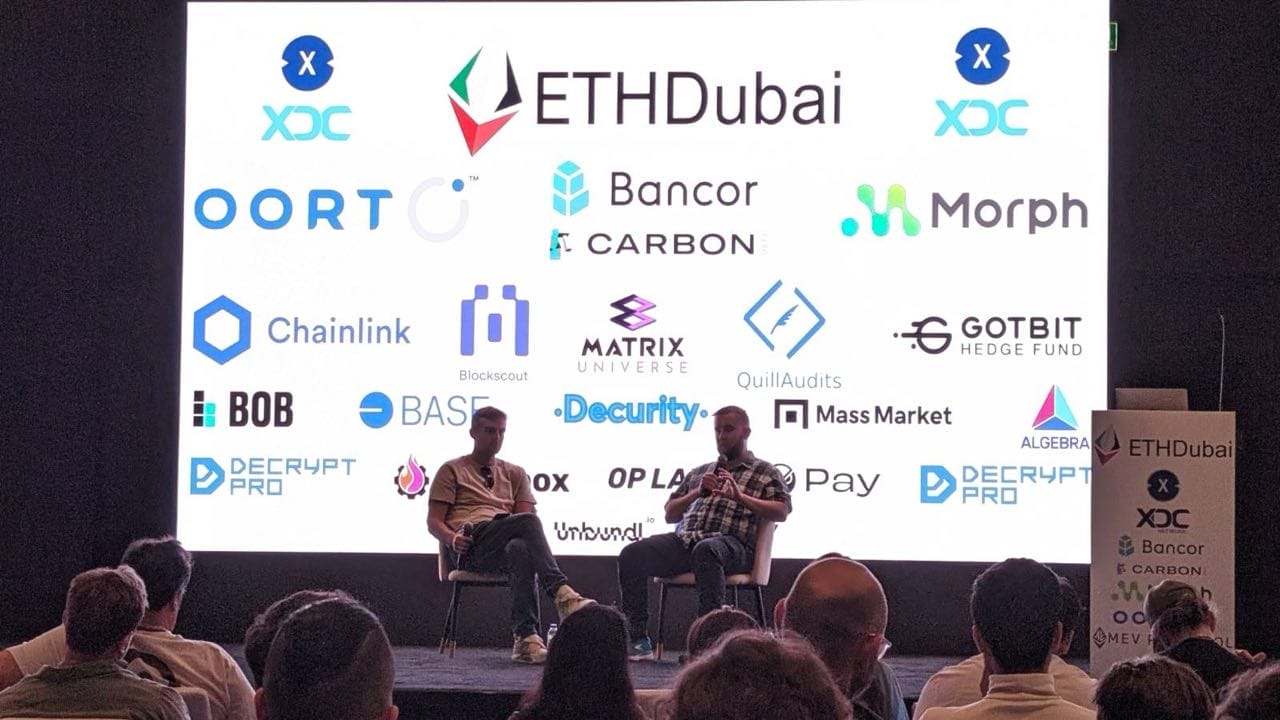This weekend, during a fireside chat with Further Ventures’ Gary Sheynkman at ETHDubai, Chainlink co-founder Sergey Nazarov offered a glimpse into the future of Chainlink-powered tokenized real-world assets.
Nazarov described the birth of Bitcoin ETFs earlier this year as merely the start of a global shift toward reformatting hundreds of trillions of dollars from traditional capital markets onchain.
“Personally, I think all of that value will eventually be reformatted into the blockchain format,” he said. “The challenge is: how do you convert and transfer all of the value in the traditional financial system into the blockchain format of value?”
As the industry-leading decentralized computing platform, which has securely enabled over $10.5 trillion in transaction value, Chainlink provides a comprehensive set of services that are critical for creating and securing tokenized real-world assets such as carbon credits, private equity, and real estate on virtually any chain.
Chainlink Data Feeds continuously update tokenized assets by delivering accurate, reliable, tamper-proof market data onchain; Proof of Reserve (PoR) leverages Chainlink oracles to verify in real time that onchain assets are fully collateralized by cross-chain or offchain assets; and Cross-Chain Interoperability Protocol (CCIP) unlocks new use cases for tokenized assets, such as ANZ’s cross-chain green financial products, by allowing them to flow freely between private bank chains and public DeFi applications.
Now that Bitcoin ETFs have opened the door to all kinds of tokenization, Nazarov said the next big push depends on the emergence of secondary markets. He expects two core groups of onchain financial products to prevail.
The first group is fundamental assets, such as treasuries and money markets, that are widely used to store value and earn interest in the traditional financial system. The second group comprises entirely new onchain financial products that confer opportunities such as fractionalization and programmability.
Nazarov explained how blockchains and oracle infrastructure like CCIP solve fundamental problems that allow these new asset classes, such as tokenized carbon credits, to achieve a superior state onchain. For example, encoding redemption data into a tokenized carbon credit allows it to serve as an immutable record that prevents it from being fraudulently resold.
In the near future, Nazarov said he’s most excited to see innovations that abstract away web3’s complexity for the average user. “The usability of our industry is still nowhere near web2,” he said. “If I were to see more scalability from blockchains, better usability generally, and more high-quality assets generated in the web3 space, that would really up the whole thing over here on this side of the equation.”
Watch Sergey Nazarov’s fireside chat with Gary Sheynkman at ETHDubai.


